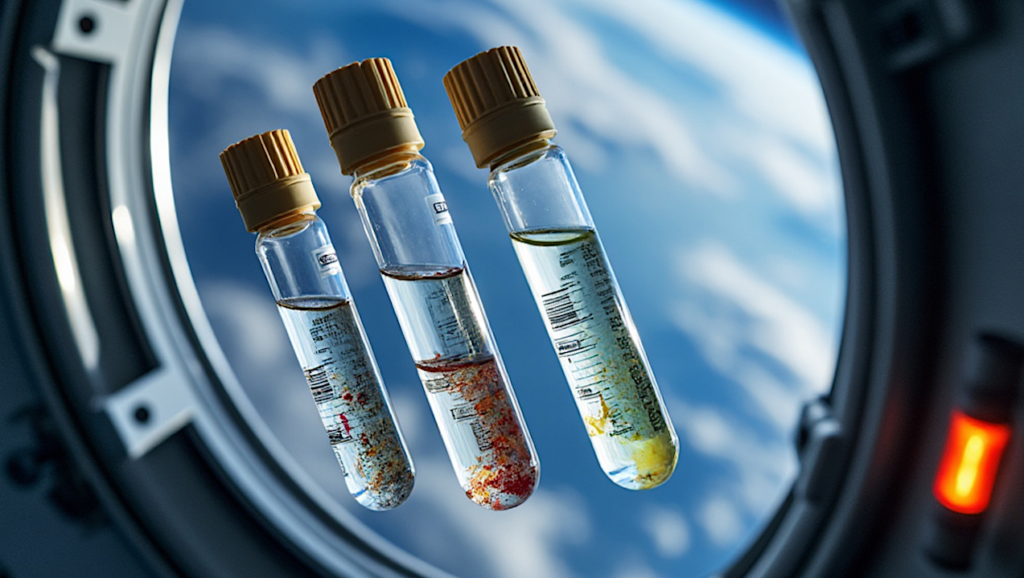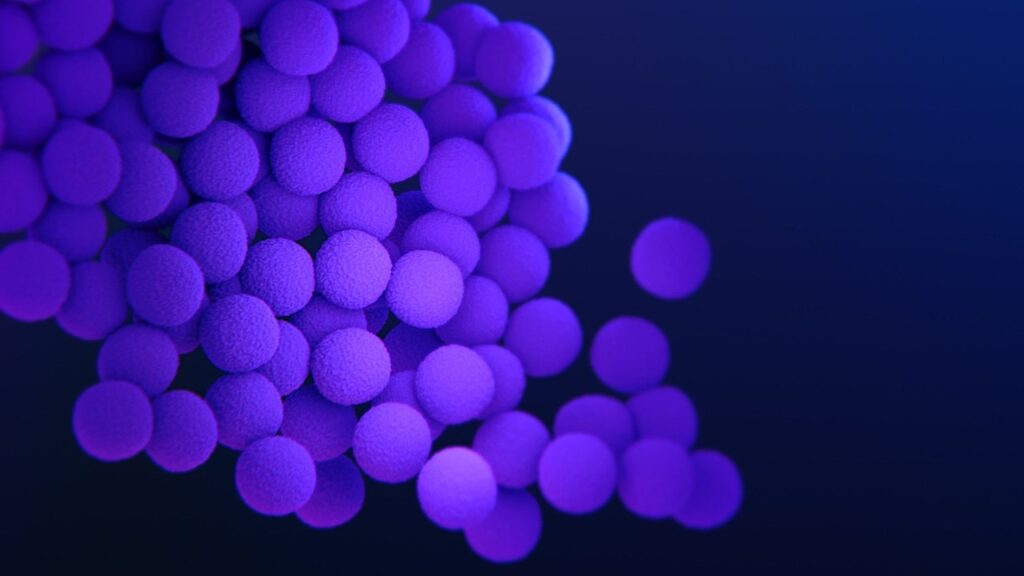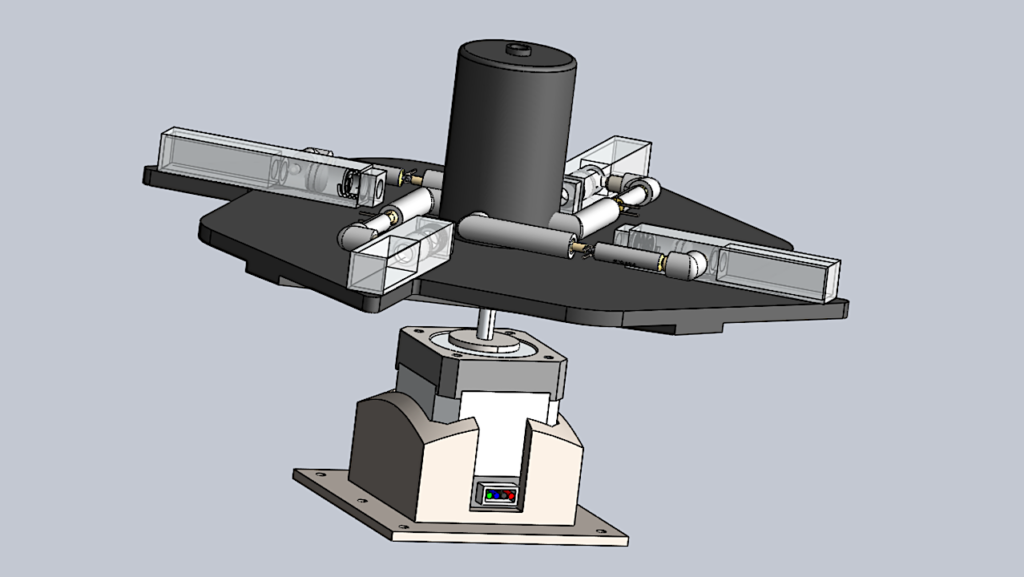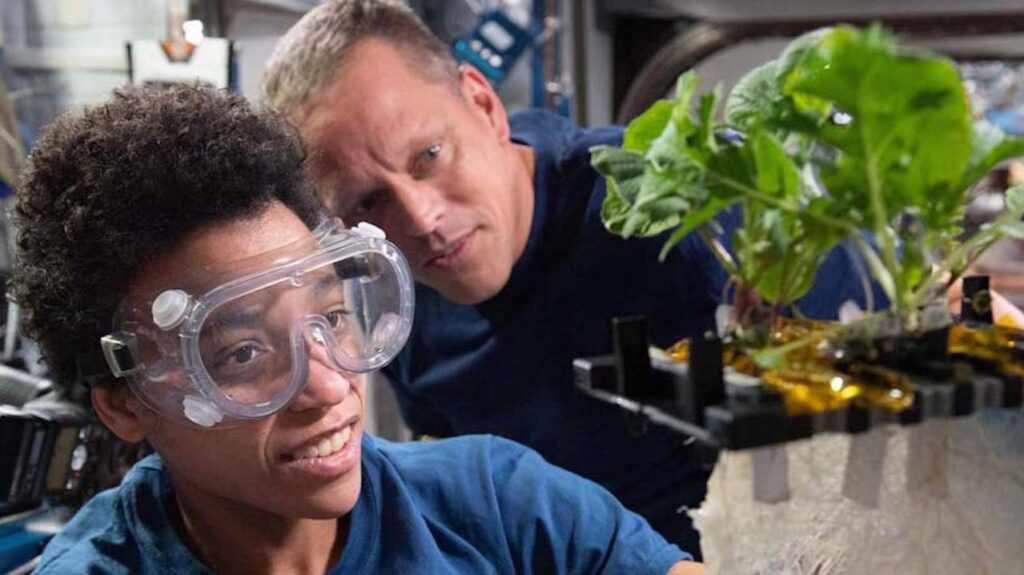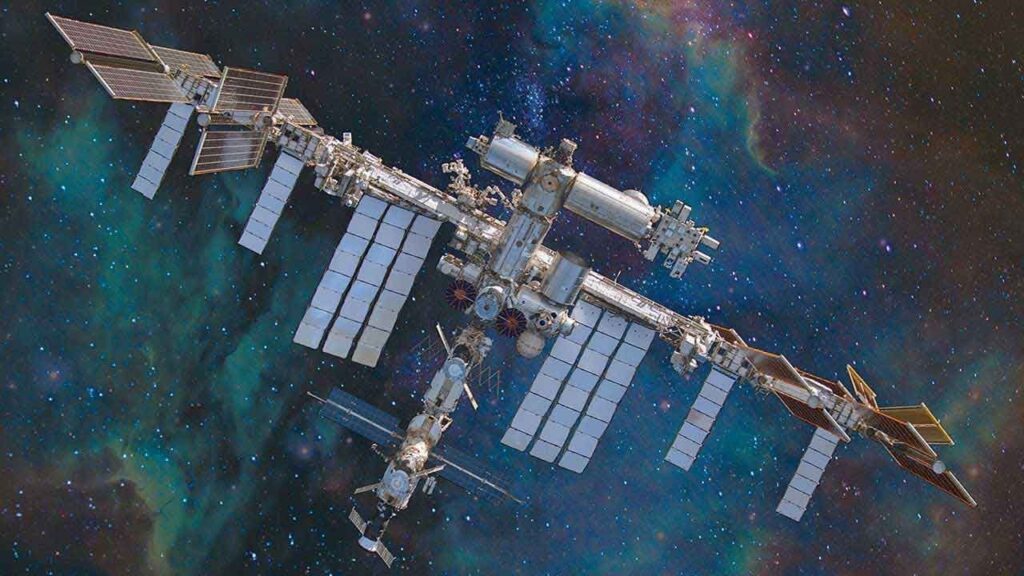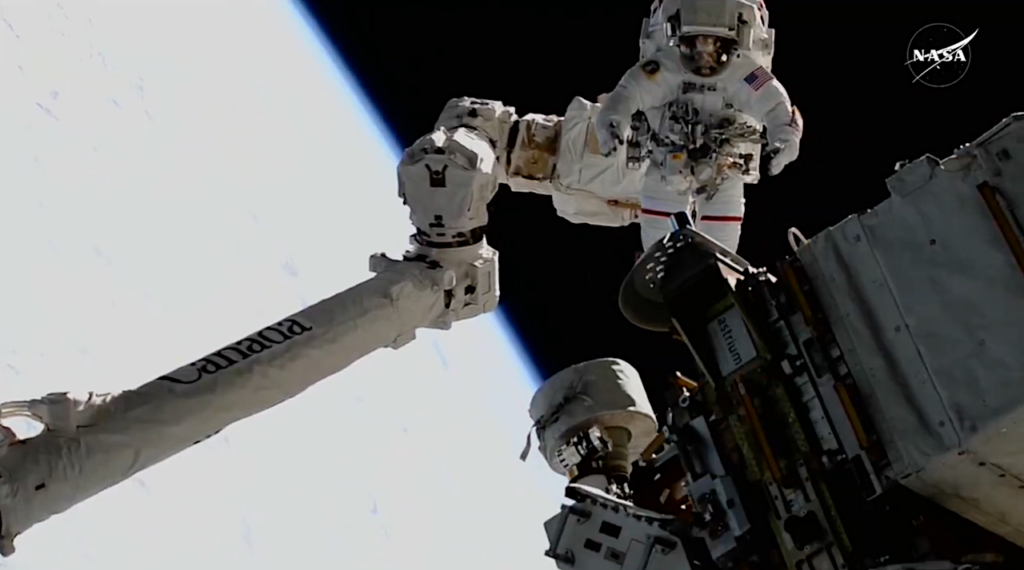NASA Spaceline Current Awareness List #1,137 21 February 2025 (Space Life Science Research Results)
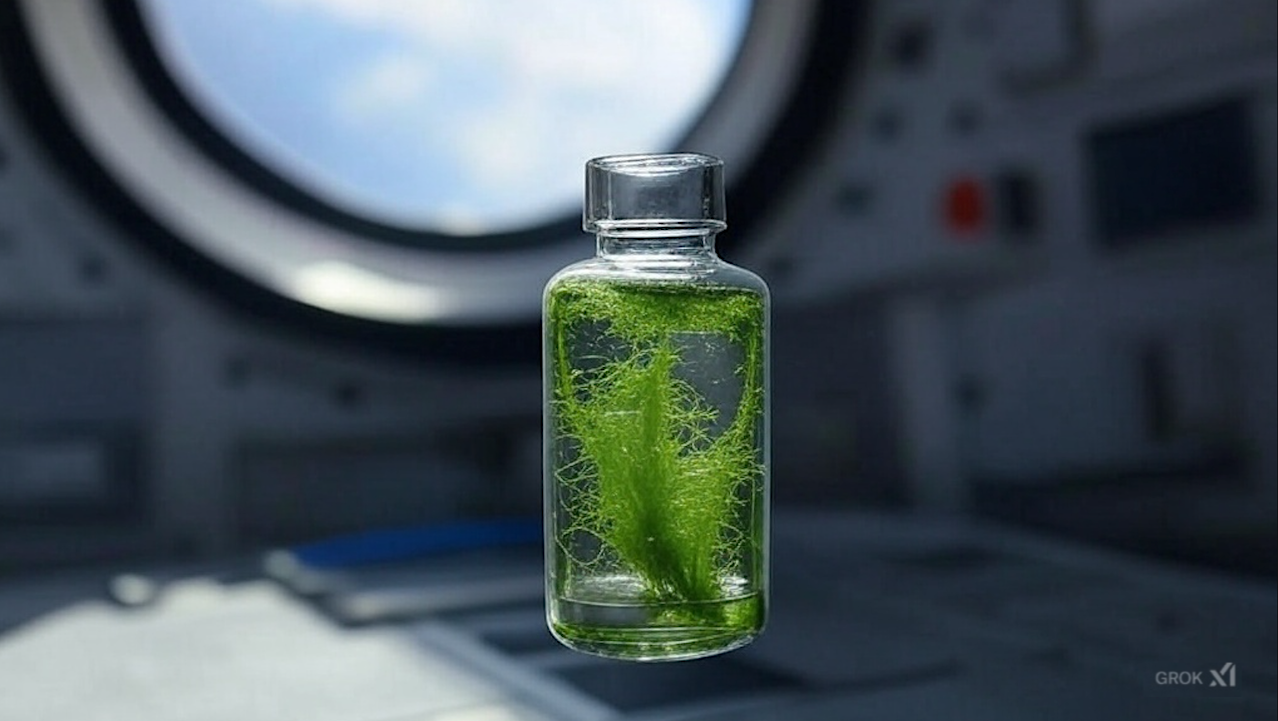
SPACELINE Current Awareness Lists are distributed via listserv and are available on the NASA Task Book website at https://taskbook.nasaprs.com/Publication/spaceline.cfm. Please send any correspondence or request to unsubscribe to Shawna Byrd, SPACELINE Current Awareness Senior Editor, [email protected].
/m
Call for articles to cite in the weekly lists: Authors at NASA Centers and NASA PIs—do you have an article that has recently published or will publish in the upcoming weeks within a peer-reviewed journal and is in the scope of space life sciences? If so, send it our way! Send your article to the email address mentioned above. Articles received by Wednesday will appear within that week’s list—articles received after Wednesday will appear the following week.
Papers deriving from NASA support:
1
Ward GH, Anderson DN, Scheuring RA.
Peri-flight neuromusculoskeletal injuries in astronauts.
Aerosp Med Hum Perform. 2025 Feb 1;96(2):155-67. Review.
https://pubmed.ncbi.nlm.nih.gov/39960402
Note: From the abstract: “This review discusses the current prevalence of peri-flight neuromusculoskeletal (NMSK) injuries in astronauts, the role of orthopedic specialists, and considerations for standards of care for astro-civilians.”
Journal Impact Factor: 0.889
Funding: G.H. Ward, D.N. Anderson, and R.A. Scheuring are affiliated with NASA Johnson Space Center.
2
Antonsen E, Burian BK, Costes SV, Reynolds RJ, Sanders LM, Sawyer A, Schrader LA, Scott RT, Snyder M, Theriot CA.
Artificial intelligence in precision space health.
In: Krittanawong C, ed. The Digital Doctor. Academic Press, 2025. p. 103-15.
https://doi.org/10.1016/B978-0-443-15728-8.00012-4
Funding: B.K. Burian and S.V. Costes are affiliated with NASA Ames Research Center.
3
Crucian BE, Quiriarte H, Lam CW, Nelman M, Colorado AA, Diak DM, James JT.
Pulmonary and systemic immune alterations in rats exposed to airborne lunar dust.
Front Immunol. 2025 Feb 5;16:1538421.
https://pubmed.ncbi.nlm.nih.gov/39981230
Note: This article is part of Research Topic “Exploring Frontiers: Astroparticle, Space Science and Public Health for Future Crewed Space Missions” (https://www.frontiersin.org/research-topics/63490/exploring-frontiers-astroparticle-space-science-and-public-health-for-future-crewed-space-missions/overview). The Research Topic also includes articles from previous Current Awareness Lists #993 https://doi.org/10.3389/fpubh.2022.862598, #1,027 https://doi.org/10.3389/fspas.2022.949432, #1,049 https://doi.org/10.3389/fspas.2023.1117811, #1,124 https://doi.org/10.3389/fphys.2024.1486767, and #1,127 https://doi.org/10.3389/fphys.2024.1482860. This article may be obtained online without charge.
Journal Impact Factor: 5.7
Funding: “The author(s) declare financial support was received for the research, authorship, and/or publication of this article. This work was supported by the National Aeronautics and Space Administration.”
4
Blazeski A, García-Cardeña G, Kamm RD.
Advancing cardiac organoid engineering through application of biophysical forces.
IEEE Rev Biomed Eng. 2025;18:211-30.
https://doi.org/10.1109/rbme.2024.3514378
PI: G. García-Cardeña
Note: From the abstract: “In this review, we discuss strategies for engineering cardiac organoids and report the effects of organoid design on the function of cardiac cells.”
Journal Impact Factor: 17.2
Funding: “The work of Guillermo García-Cardeña was supported in part by the National Institutes of Health under Grant HL152367 and Grant HL161090, and in part by a contract from the National Aeronautics and Space Administration under Grant 80ARC022CA007. The work of Adriana Blazeski was supported by the National Institutes of Health under Grant 5T32EB016652 and Grant 5T32HL007627.”
5
Suman S.
Integrative analysis of radiation-induced senescence-associated secretory phenotype factors in kidney cancer progression.
Genes. 2025 Jan 15;16(1):85.
https://doi.org/10.3390/genes16010085
PI: S. Suman
Note: This is part of Special Issue “Molecular Mechanisms Responsible for Radiation-Induced Toxicity of Normal Tissue” (https://www.mdpi.com/journal/genes/special_issues/Toxicity_Tissue) and may be obtained online without charge.
Journal Impact Factor: 2.8
Funding: “The author received funding from the following sources: (1) Department of Defense, United States Army Medical Research Acquisition Activity (Grant Number: HT9425-24-1-0450); (2) National Aeronautics and Space Administration (Grant Number: 80NSSC24K0287); and (3) Pilot grant [sub-award 4(GG014746-56); 4(GG014746-77)] from the Opportunity Funds Management Core of the Centers for Medical Countermeasures against Radiation, National Institute of Allergy and Infectious Diseases (Grant number U19AI067773).”
__________________________________________________
Other papers of interest:
1
Balukoff NC, Houk G, Gonzalez T, Berton Y, Ronfard V, Pastar I, Tomic-Canic M.
Out of this world: Wound healing on Earth and in space.
J Invest Dermatol. 2025 Feb 13. Review. Online ahead of print.
https://pubmed.ncbi.nlm.nih.gov/39955658
Note: This article may be obtained online without charge.
2
Del Fabbro M, Khijmatgar S, Vandenberghe B, Kijak E, Kulesa-Mrowiecka M, Singhal I, Lorusso F, Xavier BB, Sampson V, Marfia G, Neefs D, Tartaglia GM.
Oral health of astronauts in short- and long-term missions in space.
Aerosp Med Hum Perform. 2025 Feb 1;96(2):168-79. Review.
https://www.doi.org/10.3357/AMHP.6372.2025
3
Holsgrove TP, Ebisch I, Lazaro-Pacheco D.
Do we know more about the mechanobiology of the intervertebral disc in space than on Earth?
JOR Spine. 2025 Mar;8(1):e70024.
https://pubmed.ncbi.nlm.nih.gov/39968355
Note: This article is a perspective and may be obtained online without charge.
4
Ouyang J, Xie W, Xu G, Li C, Gan S, Zhang X, Yang X, li Y, Jiang C.
SpacesuitPose: Deep learning-based spacesuit pose estimation in extravehicular activities from monocular images.
Acta Astronaut. 2025 Feb 18. Online ahead of print.
https://doi.org/10.1016/j.actaastro.2025.02.015
Note: From the abstract: “The considerable progress in deep learning provides a possible solution for pose estimation of astronauts wearing spacesuits from EVA recordings without special sensors. However, this task faces significant challenges due to data scarcity and feature confusion. The SpacesuitPose dataset has been innovatively constructed to tackle these challenges.”
5
Schmidt CM, Paterson T, Schmidt MA.
The astronaut digital twin: Accelerating discovery and countermeasure development in the optimization of human space exploration.
In: Schmidt MA, Legato MJ, eds. Building a Space-Faring Civilization: Academic Press, 2025. p. 245-56.
https://doi.org/10.1016/B978-0-443-13850-8.00022-1
6
Schmidt MA, Schmidt JC.
Using functionally characterized networks in the application of precision medicine in spaceflight.
In: Schmidt MA, Legato MJ, eds. Building a Space-Faring Civilization: Academic Press, 2025. p. 217-43.
https://doi.org/10.1016/B978-0-443-13850-8.00018-X
7
Tran K-A, Pollock NW, Dion P-M, Lapierre M, Tremblay S, Witteman W, Rhéaume C, Lafond D, Fortier F-A, Marion A, Dutil-Fafard L, Morin C, LePabic G, Monnot DPM, Archambault PM.
Managing select medical emergencies during long-duration space missions.
Aerosp Med Hum Perform. 2025 Feb 1;96(2):143-54.
https://www.doi.org/10.3357/AMHP.6510.2025
8
Cui Y, Liu H, Li Z, Luo B, Zhao J, Tang S, Wang A, Wang G, Du J, Yang J.
Investigation on the mechanism of simulated microgravity promoting rat cerebral angiogenesis based on proteomics.
Acta Astronaut. 2025 Feb 14. Online ahead of print.
https://doi.org/10.1016/j.actaastro.2025.02.024
Note: Hindlimb unloading study.
9Galčenko K, Bourdakou MM, Spyrou GM.
Exploring the impact of microgravity on gene expression: Dysregulated pathways and candidate repurposed drugs.
Int J Mol Sci. 2025 Feb 2;26(3):1287.
https://pubmed.ncbi.nlm.nih.gov/39941055
Note: From the abstract: “Space exploration has progressed from contemporary discoveries to current endeavors, such as space tourism and Mars missions. As human activity in space accelerates, understanding the physiological effects of microgravity on the human body is becoming increasingly critical. This study analyzes transcriptomic data from human cell lines exposed to microgravity, investigates its effects on gene expression, and identifies potential therapeutic interventions for health challenges posed by spaceflight.” This article is part is Special Issue “Exploring the Molecular Basis of Cellular Responses to Microgravity-Induced Oxidative Stress” (https://www.mdpi.com/journal/ijms/special_issues/6969Q0OCS2) and may be obtained online without charge.
10
Maguire K, Wydotis M, Bollinger L, Caruso J.
Abating heat accrual during exercise in microgravity and implications for future long-term missions.
Aerosp Med Hum Perform. 2025 Jan 1;96(1):53-61. Review.
https://www.doi.org/10.3357/AMHP.6536.2024
11
Peysakhovich V, Kiehl T, Martinez LV, Boyer L, Causse M, Paillet A, Pavy-Le Traon A.
Short-term microgravity effects simulation does not affect fNIRS measures of cerebral oxygenation changes induced by cognitive load.
Front Physiol. 2025 Feb 19;16:1425302.
https://doi.org/10.3389/fphys.2025.1425302
Note: Head-down tilt bedrest study. This article may be obtained online without charge.
12
Sharma M, Gaur S, Pawar H, Yadav N, Thondala B, Kumar S, Kishore K, Ray K, Panjwani U.
Neurophysiological and cognitive changes induced by the acute head-down tilt.
Aerosp Med Hum Perform. 2025 Jan 1;96(1):45-52.
https://www.doi.org/10.3357/AMHP.6282.2024
13
Wu Z, Liu X, Liu H, Hu D, Degermendzhi A, Bartsev S, Fu Y.
Microgravity’s grip: Transforming plant-microbe interactions for space sustainability.
Acta Astronaut. 2025 Feb 20.
https://doi.org/10.1016/j.actaastro.2025.02.032
Note: A 3D clinostat was used in this study to simulate microgravity effects.
14
Cornelissen SJWM, Frijters E, Gray G.
Lung function changes with acute +Gz
exposure as assessed by impulse oscillometry.
Aerosp Med Hum Perform. 2025 Jan 1;96(1):62-6.
https://www.doi.org/10.3357/AMHP.6433.2024
15
Zakharyan R, Hakobyan S, Brojakowska A, Davitavyan S, Stepanyan A, Sirunyan T, Khachatryan G, Khlgatian MK, Bisserier M, Zhang S, Sahoo S, Hadri L, Garikipati VNS, Arakelyan A, Goukassian DA.
Long-lasting sex-specific alteration in left ventricular cardiac transcriptome following gamma and simGCRsim radiation.
Sci Rep. 2025 Feb 18;15(1):5963.
https://doi.org/10.1038/s41598-025-89815-2
Note: This article may be obtained online without charge.
16
De Ridder S, Neyt X, Germonpré P.
Adaptive inert gas exchange model for improved hypobaric decompression sickness risk estimation.
Aerosp Med Hum Perform. 2025 Feb 1;96(2):85-92.
https://www.doi.org/10.3357/AMHP.6554.2025
17
Harris LR, Jörges B, Bury N, McManus M, Bansal A, Allison RS, Jenkin M.
Can visual acceleration evoke a sensation of tilt?
Exp Brain Res. 2025 Feb 17;243(3):68.
https://pubmed.ncbi.nlm.nih.gov/39960499
Note: From the abstract: “Under the microgravity of the International Space Station, many of the normal processes that determine the perceptual upright on Earth are disrupted. For example, somatosensory cues are absent and an applied physical linear acceleration can provide an artificial ‘gravity’ reference. Here, we hypothesized that visual linear acceleration could also be interpreted as an orientation cue in microgravity. Using virtual reality, we subjected twelve astronauts experiencing long-duration exposure to microgravity to visually simulated accelerating linear self-motion along a virtual corridor at 0.8 m•s- 2 (0.083 G) for 16s. They then adjusted a virtual ground plane to indicate whether they had changed their perceived orientation. Control experiments used visually simulated linear self-motion at a constant velocity and control experiments on Earth mirrored the experiments conducted in microgravity in both upright and supine postures.”
18
Mitchinson CJ, Caruso J, Best S, Bollinger L.
Lower extremity electromyography during submaximal squats with varying moments of inertia.
Aerosp Med Hum Perform. 2025 Feb 1;96(2):93-100.
https://www.doi.org/10.3357/AMHP.6373.2025
Note: From the abstract: “Spaceflight impairs muscle size, strength, recruitment, and aerobic capacity. Flywheel-based inertial training (FIT) has been used as a countermeasure to preserve muscle strength and size. The objective of this study was to determine how submaximal FIT squats with varying moments of inertia (MOI) affects lower extremity muscle recruitment.”
19
Sánchez-Lozano JM, Peña-Asensio E, Bickel VT, Kring DA.
Prioritizing astronaut traverses on the Moon: A multi-criteria decision-making approach.
Acta Astronaut. 2025 Apr;229:77-89.
https://doi.org/10.1016/j.actaastro.2025.01.026
Astrobiology, space biology, space medicine, microgravity,


